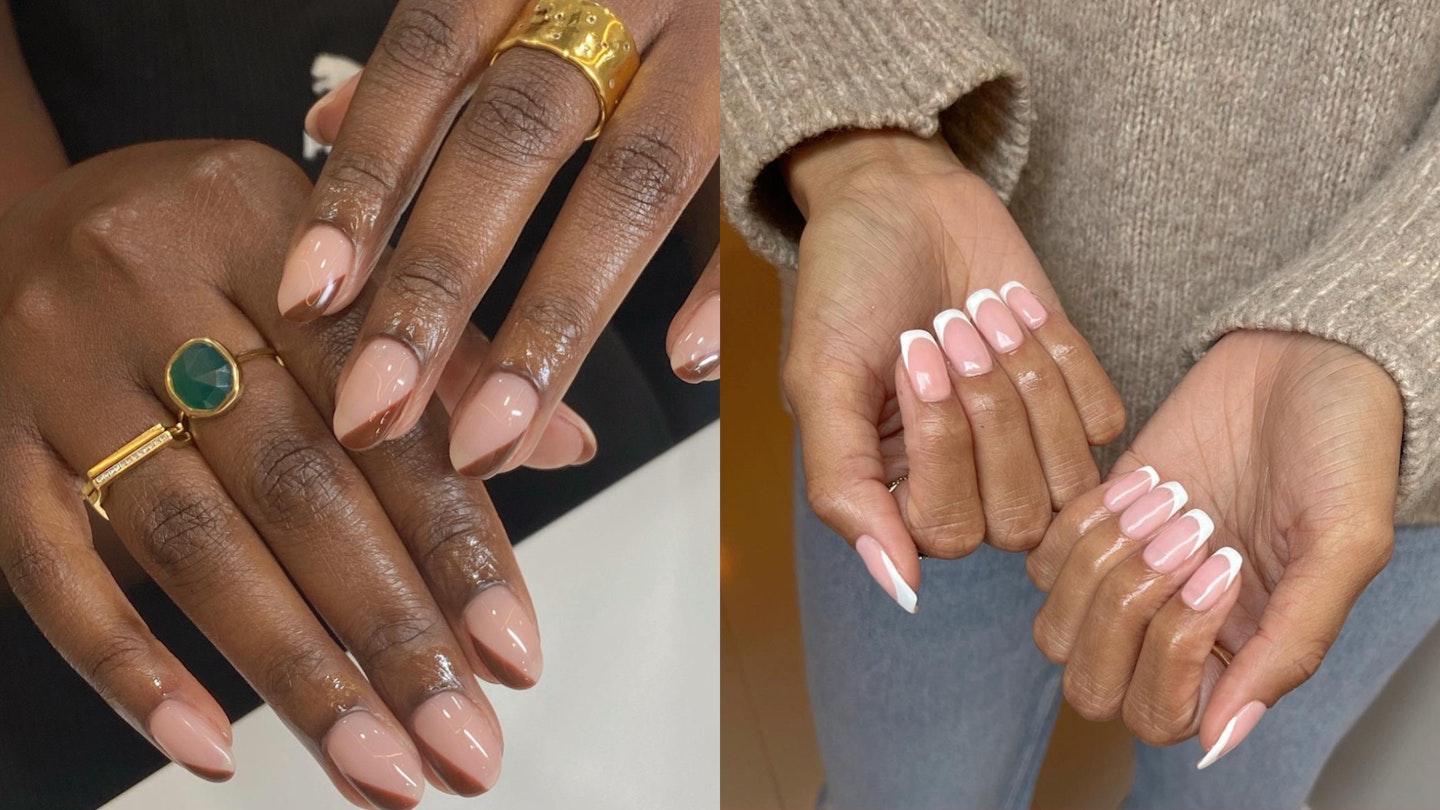Let's talk BIAB nails. Suited to all nail designs and nail shapes, this social media sensation, #biabnails has amassed millions of posts across TikTok and Instagram alike. Why? Unlike traditional gels or acrylics, this manicure boosts nail strength like nothing else. I only started my BIAB journey last year and since my nails have become much longer and stronger. When using traditional polish and even gel polish, my nails became brittle and often snapped, so I never achieved the length I'd hoped for. Now? They’re so much more fortified and have grown incredibly long. Which I'll absolutely take. So, what exactly is a BIAB manicure and how does it differ from Shellac, acrylic nails or gel polish? Scroll on for myriad expert insights, maintenance tips, and the lowdown on where you can book in for BIAB.

The picture on the left was taken straight after my first BIAB manicure and the one on the right four weeks later. Although grown out, I couldn't believe how good my nails looked after a full month. There was no breakage or chipping and my nails had grown longer than they'd ever been before. I'm a total convert. We spoke to BIAB nail expert Alexandra Teleki to find out all you need to know from what it is, how to apply it and how long it lasts.
Meet Our Experts
Celebrity manicurist Alexandra Teleki aka TheHotBlend is a world renowned manicurist and BIAB nail expert. Teleki has worked with major nail brands from The Gel Bottle through to Essie and is a part of the Grazia Beauty Panel.
What is BIAB?
BIAB is the manicure of the moment. It continues to flood our social media feeds and has accrued an illustrious roster of celebrity loyalists, from Kim Kardashian to Jennifer Lopez. It has amassed 190.5K posts on TikTok and counting. While it's grained traction in recent years, it is by no means a new phenomenon. Popular nail care brand The Gel Bottle, founded by nail tech Daisy Kalnina actually launched BIAB way back in 2015.
Time to unpack it. Let's start with the acronym itself. ‘BIAB stands for “builder in a bottle”, which is also known as builder gel,’ explains Teleki. 'It's a professional soak off range of nail products specifically designed to add strength and structure to your natural nails.’
As aiding strength, length and protection is the BIAB MO here, expect a slighter thicker polish than your regular gel mani thanks to the protective layer that's applied.
The end result is a look that's very similar to a traditional gel manicure - expect the same high-shine, jelly like finish but with a more fortified nail.
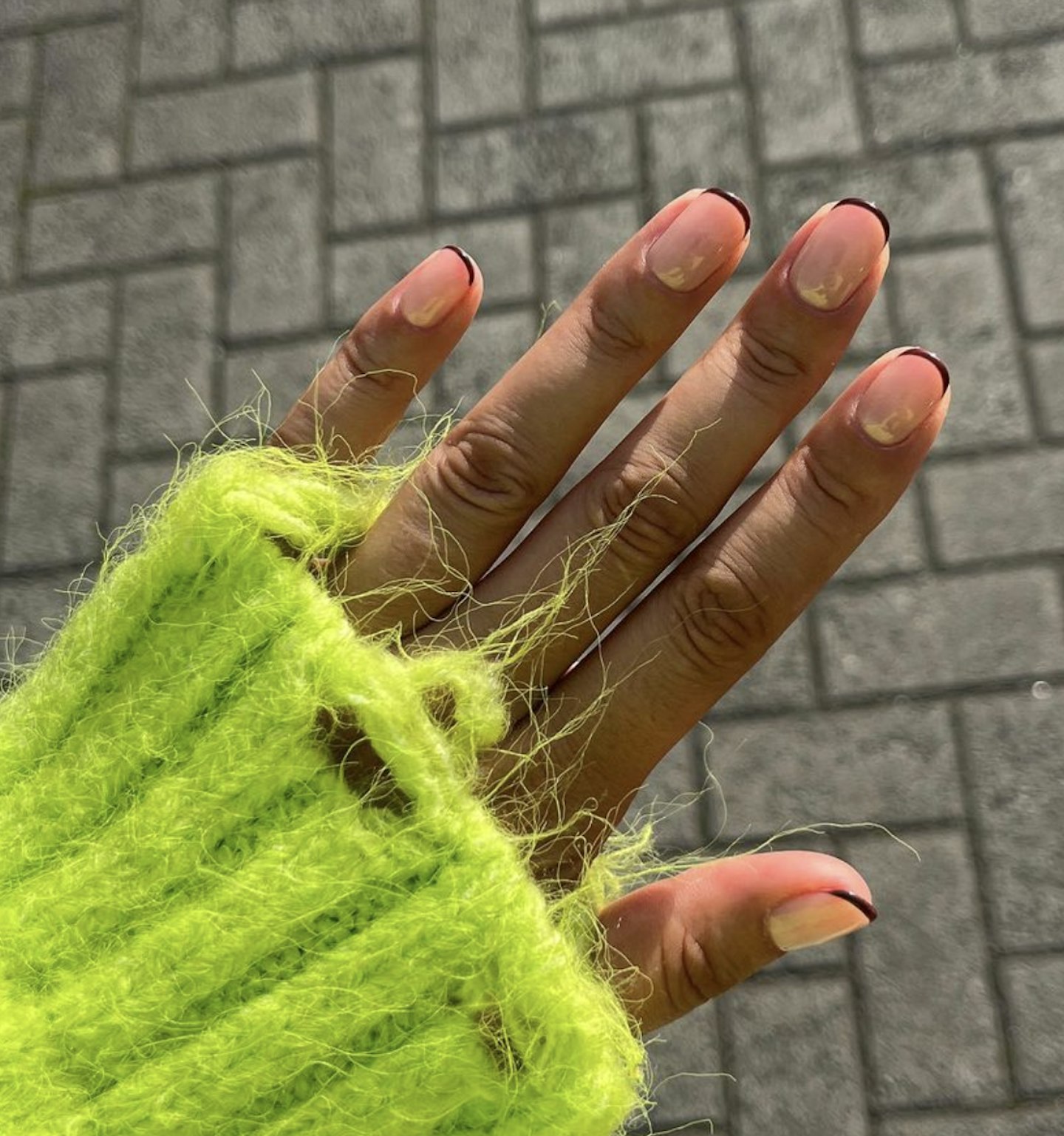
Instagram @corrinnabianca
How is BIAB applied?
BIAB application is much like that of traditional gel and shellac manicures. Here's Teleki's step by step guide to builder in a bottle application.
Prep and buff: 'Your manicurist will prep and buff the nails using a nail file and buffer to allow the base to adhere to your natural nails. This is when a traditional manicure may be performed too using cuticle work.'
Base: 'Builder gel is an all-in-one, it contains a primer, a base coat, a colour and the builder gel in the mixture. All these ingredients mean we cut out four steps in the manicure process,' says Teleki.
Apply BIAB: 'Next, your manicurist will apply a thin layer of BIAB polish over the natural nail. Once this base is evened out, it will be cured under a high quality LED lamp. After this sets (in and around 60 seconds) comes the next layer. A thick, gel-like bead of BIAB gel will be pressed onto the nail bed and shaped around the nail in one go. As this is thicker than traditional gel, your manicurist will take more time to ensure the coverage is thin and natural around the edge of the nail and the cuticle before curing again.'
Refine and buff: 'After buffing again, refining and removing any dust, your manicurist can apply a layer of traditional gel polish on the top, or finish with a topcoat to add gloss.'
Extras: 'It's at this point nail art can be added too.'
Watch: BIAB Application Tutorial
Best BIAB top coat
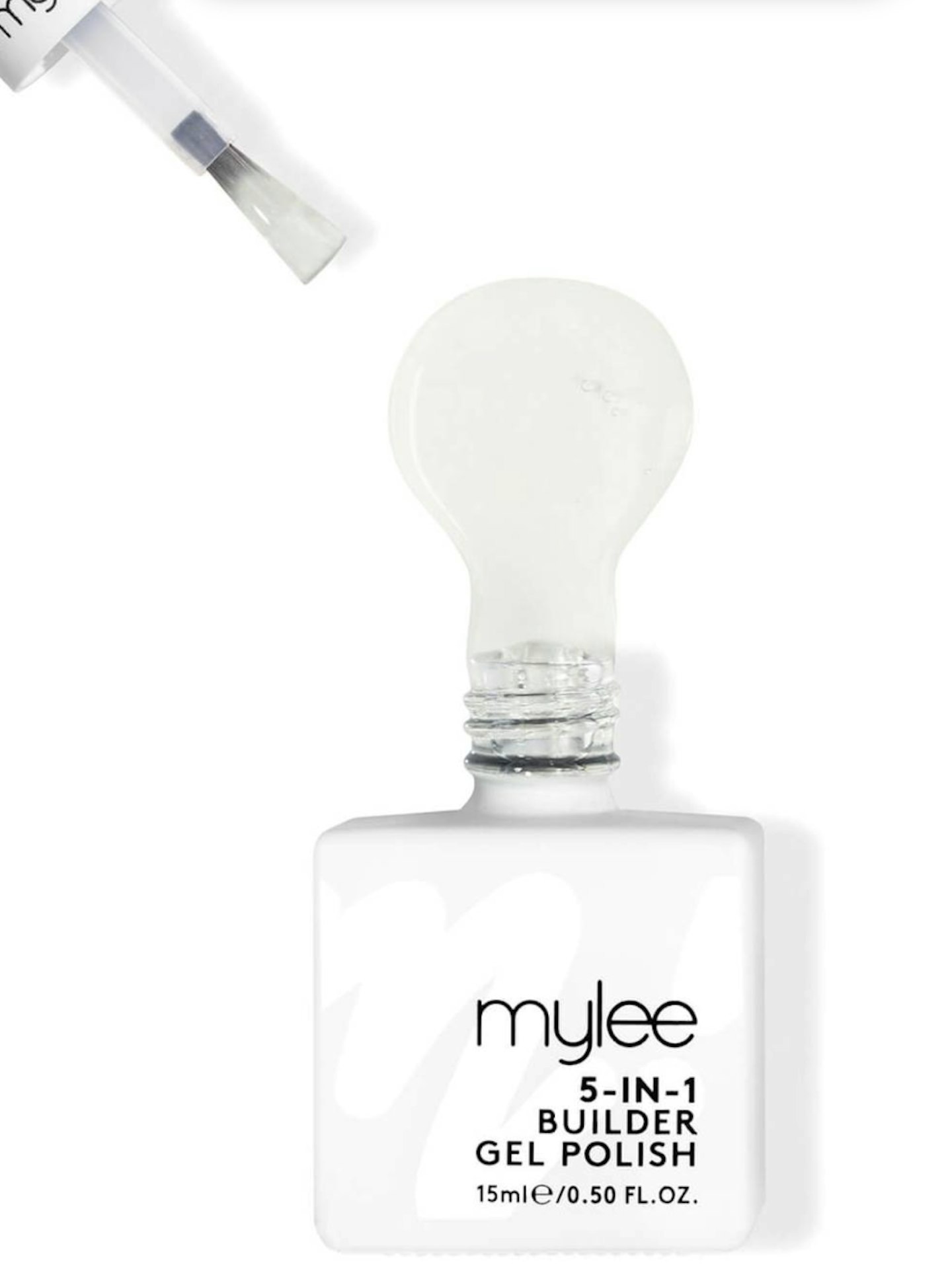
www.lookfantastic.com
The perfect base does exist. Take a small amount of the gloopy formula and be careful to seal off the tip of the nail.
Pros
- Cures fast -30 secs.
- Great top coat and primer.
Cons
- Requires soaking for removal.
Best nail precision brush
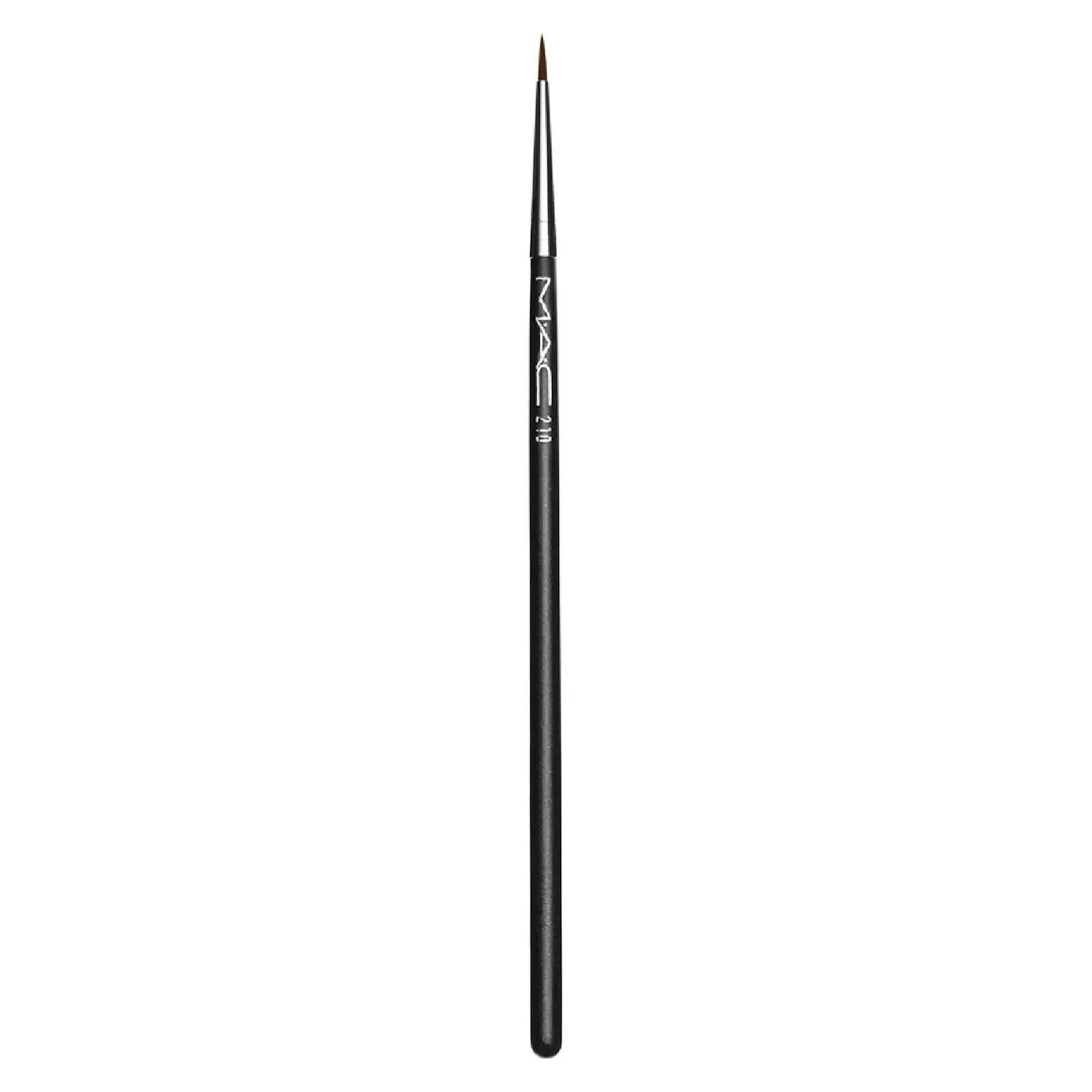
www.lookfantastic.com
Ideal for carving out a white tip, an eye liner brush can work wonders. This one from Mac is incredibly precise if you're attempting delicate nail art at home. Practice makes perfect.
Pros
- Super fine precison brush.
- Smooth and glides on easily.
Cons
- Not for gel polishes, so can harden if product is not properly removed.
How long does BIAB take to apply?
In my experience, a BIAB manicure definitely takes longer than a traditional gel manicure. Expect to set aside around an hour and a half for the look. And, if you’re coupling it with a Russian manicure then it can take up to two hours. But, that said, you'll be visiting the nail salon much less frequently, so it's a win win situation.
What's the difference between BIAB and gel or shellac?
Shellac was most famously introduced to the nail industry by CND, explains Teleki, and is a patented brand of gel polish that is mixed with nail polish and gel. 'It is a product that is slightly thicker than nail polish and the key difference being that instead of air drying, it is cured using ultraviolet light. Shellac is expected to last between 1 or 2 weeks, depending on aftercare. Gel polish is slightly thicker than Shellac in consistency and helps the nails to last 2 to 3 weeks with the right aftercare,' says Teleki.
This process of 'curing' (using a UV lamp) ensures the polish is chip-resistant and long-wearing. BIAB is a also a type of gel polish but one that's formulated with a stronger base, which assists nail growth. The only pitfall to bear in mind is that BIAB polishes are available in a limited shade range. But fret not, if you're sold on the trend but set on a shade that's not available in BIAB, you need only apply any other gel polish over a clear BIAB base.
Best at home BIAB kit

mylee.co.uk
An excellent starter kit - consider this your LED lamp go to. While you'll need to buy builder gels separately, it does come with four regular gel polishes.
Pros
- Lengthening and strengthening formula.
- Sculpts your nails to reduce chipping and smudging.
- Promotes long wear.
- LED lamp cures polish in 60 seconds.
- Lightweight and portable.
Cons
- Strong smell.
- Initial investment for begginers.
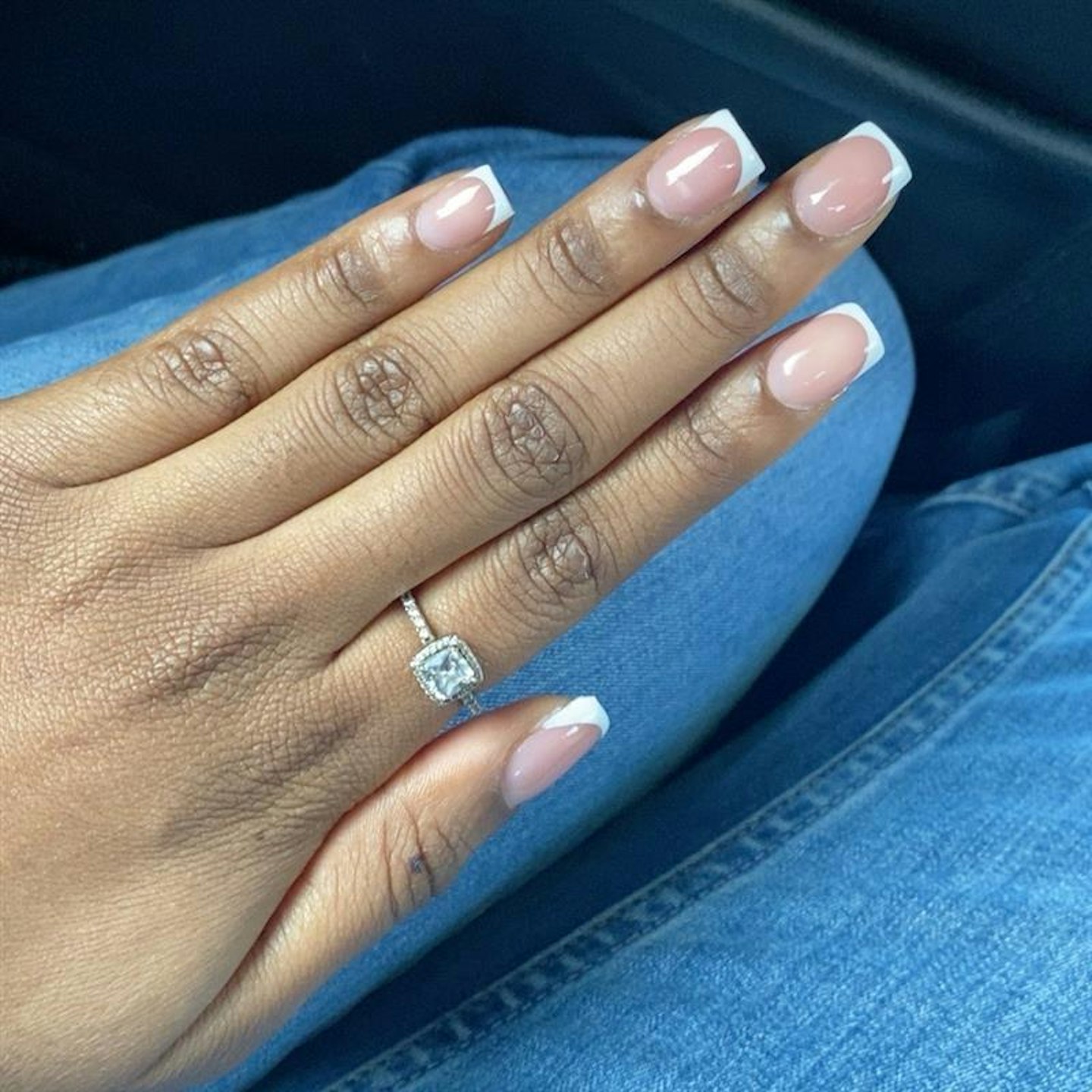
@RENEE WASHINGTON, GRAZIA
What's the difference between BIAB and acrylic nails?
'Acrylic nails were invented in 1950s, became very popular by the late 90’s and has been a preferred service by many. Acrylic resin was great to provide additional strength to the natural nails and it also can extend the nails without using an ultraviolet lamp. The downside to acrylic is that once this material dries, it has little to no flexibility, therefore any trauma caused to the nails increases the likelihood of damaging the nail plate,' explains Teleki.
They are often formed using an extension and a combination of a liquid acrylic monomer and a powder acrylic polymer - this process can be harsh on the nails, Teleki adds. In comparison, 'BIAB l is applied directly to the natural nail and cured using a lamp, providing it with a protective shell that will allow the nail to grow.'
Is BIAB good for your nails? Is BIAB suitable for weak or damaged nails?
While the consistency of the formula is thick, the added layers of protection enable nails to grow steadily and lessens the chances of breakage. In other words, if you have a biting habit, this may be your 'get out of jail free' card. 'The thickness of BIAB is what helps to reinforce strength, durability and protection from external factors like knocks and bumps. What's more, BIAB nail looks can be achieved without the need for glue or plastic tips, and it can also be used to repair broken nails,' explains Teleki.
What are the downsides of BIAB?
While BIAB excels at creating strong formulas to help support the nails, this translates to a tedious removal process. BIAB requires soaking with acetone and filing with a nail drill, this process requires a lot of patience in order to not undo all the good the gel has done! Renee Washington digital fashion and beauty writer said, 'If you like long nails BIAB might not be for you, its ideal fornatural nail designs and short extensions. You might also find difficulty changing your nail shape without sacrificing length, e.g square to almond designs. I unfortunately had to jump ship. For those seeking significant length, and OTT designs alternative nail enhancements like hard gel or acrylics are better suited.’ Lastly, although BIAB is marketed towards beginners, it does require a bit of underlying skill, inexperienced users may experience uneven application or lifting.
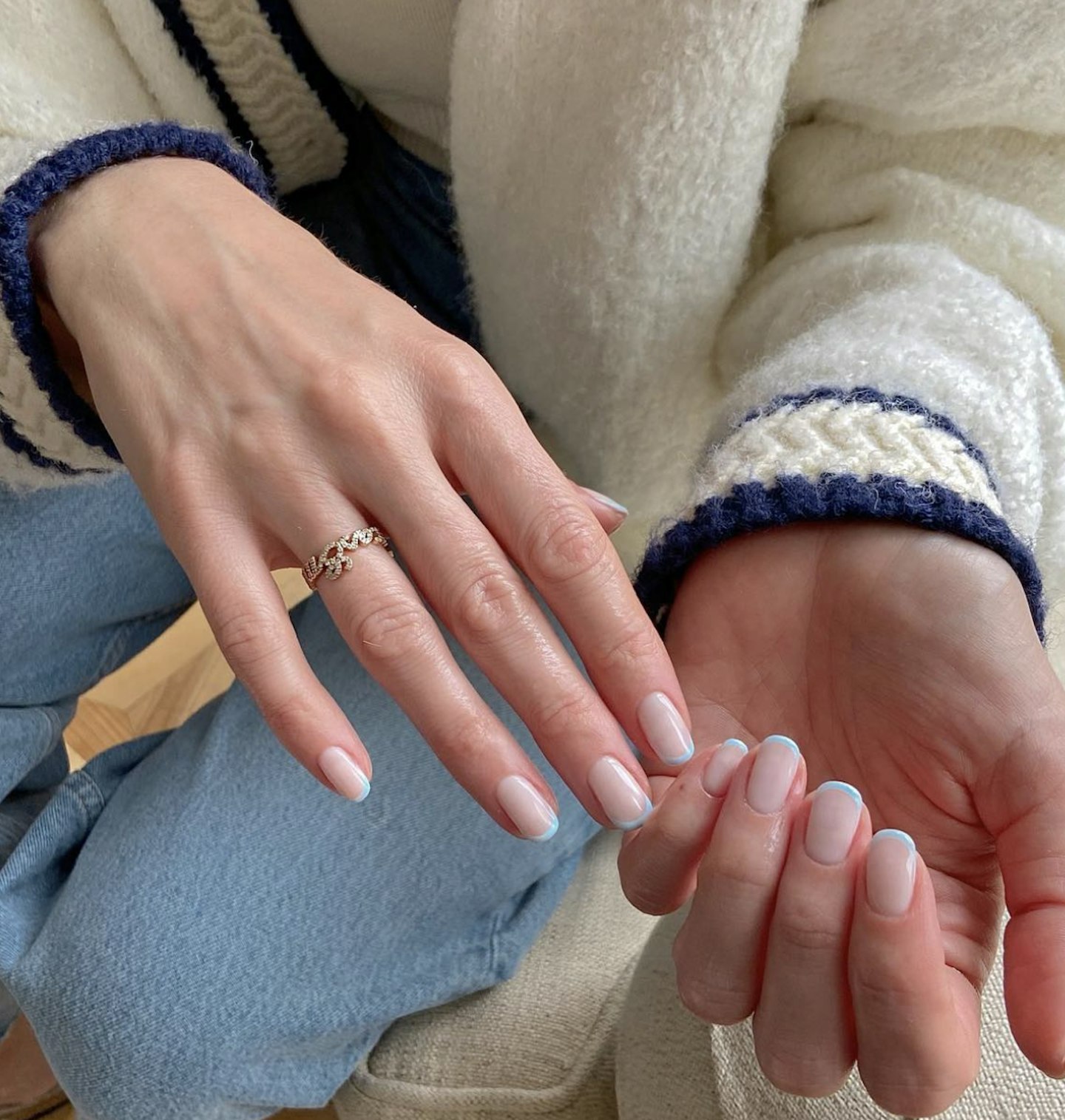
Instagram @corrinnabianca
How long does BIAB last and how often should BIAB be removed?
Teleki explains, 'the recommended time to wear builder gel on nails is between three to four weeks. If it’s left on too long the gel will lift and is more likely to break so I wouldn’t recommend keeping a set on longer than four weeks.'
She adds, with proper nail prep it can last much longer, but manicurists often don't advise keeping a BIAB set on for too long. 'It's always great to give nails a break, then after around four weeks they can either be infilled or soaked off.'
What’s the best way to maintain BIAB nails?
Infills and gentle care. Having your nails infilled every two to three weeks will ensure longevity and structural integrity of your nails, preventing lifting and breakage. BIAB provides strength, but it’s not indestructible. Avoid using your nails as tools for opening boxes or cans, wearing gloves during household tasks is also highly recommended. To keep your hands looking fresh throughout your set, we recommend keeping them moisturised with a hydrating lotion.
Best hand cream for dry hands
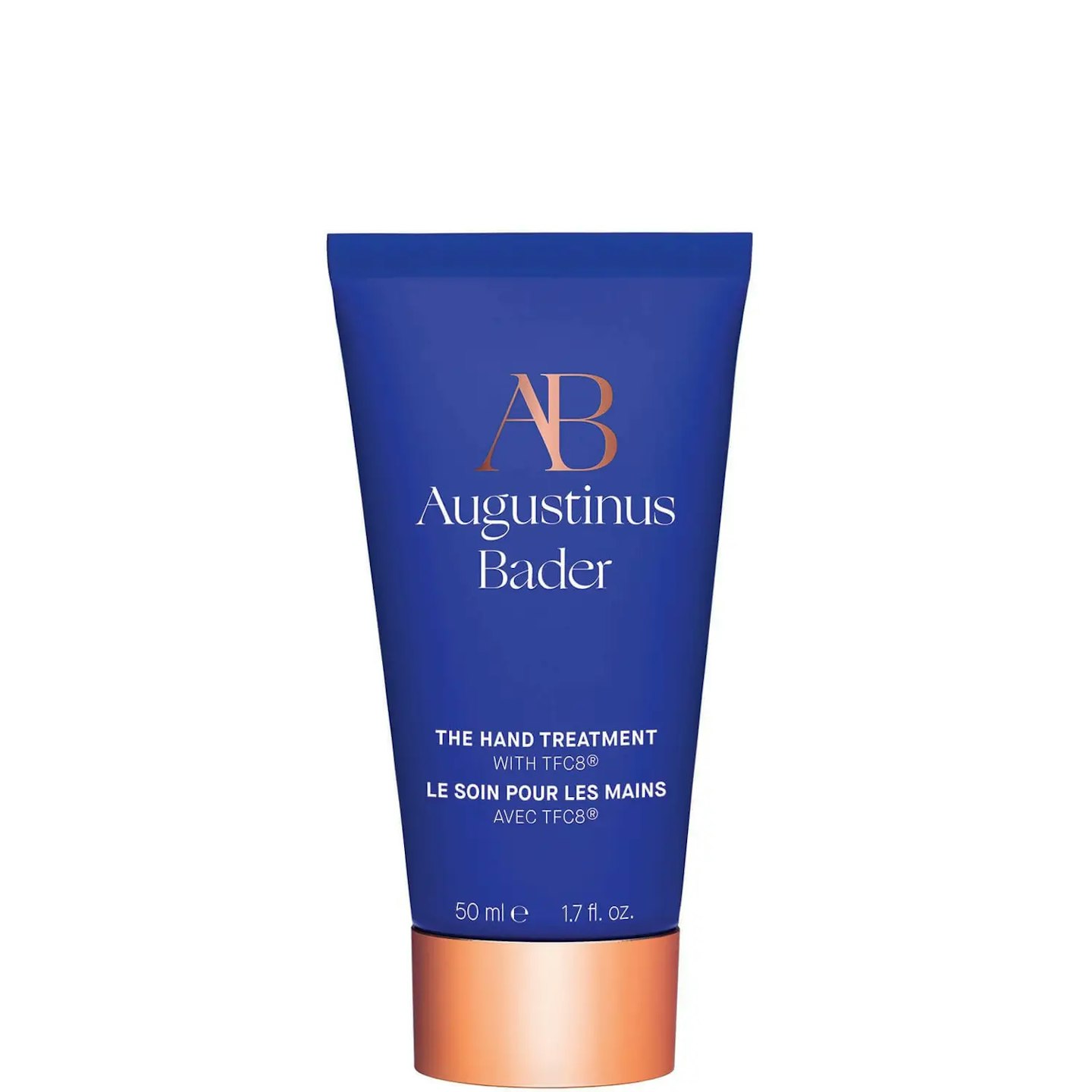
www.cultbeauty.co.uk
If the brand's cleanser and face cream are anything to go by, you'll love its restorative hand cream. Infused with its patented technology TFC8 (a complex of amino acids, vitamins and synthesised molecules which create the perfect environment for skin to foster its own repair and renewal process), the rich formula keeps soothed, soft and protects mitts.
Pros
- Suitable for all skin types.
- Strengthens skin barrier.
- Deeply nourishes dry skin after nail treatments.
Cons
- Investment purchase for first time 'DIY-ers'.
How much does BIAB cost?
Depending on location you can expect to pay anywhere between £20 and £70 for BIAB nails - central London salons, for example, will be more expensive.
I always go to my local salon in Earls Court. It’s called L’amour Beauty and although there’s no frills involved they do exactly what I want - that being a glossy pink toned designthat allows me to look and feel polished (quite literally) for up to three weeks at a time. It costs £30 and I like to book via Treatwell - it’s always easy to find a slot that suits me and saves me waiting around if they’re particularly busy.
Can you remove BIAB nails at home?
Gel builder nail polish is not as simple to remove as regular polish. The thickness and durability of the formula means removing it can be quite the task, so it's always best to visit a professional to complete this job. But that's not to say you can't do it yourself.
First, you'll need a sturdy removal tool kit, which consists of a nail polish remover containing acetone, cotton pads, a cuticle pusher, tin foil, a nail file and some cuticle oil. Start by filing down the top coat of your colour and file down as much as you can without touching your natural nail. Then, soak the cotton pad in your acetone nail polish remover before placing it on the nail and wrapping tin foil around it to secure the cotton pad in place. Let that sit for at least 10 minutes.
What is left on your nails should be loose and sticky in texture, this can be gently scraped away with a cuticle pusher. Finish off with some TLC by applying cuticle oil to the nail beds. We love Essie's Nail Care Cuticle Oil Apricot Treatment, £8.99, which boasts a nourishing and non-greasy formula.
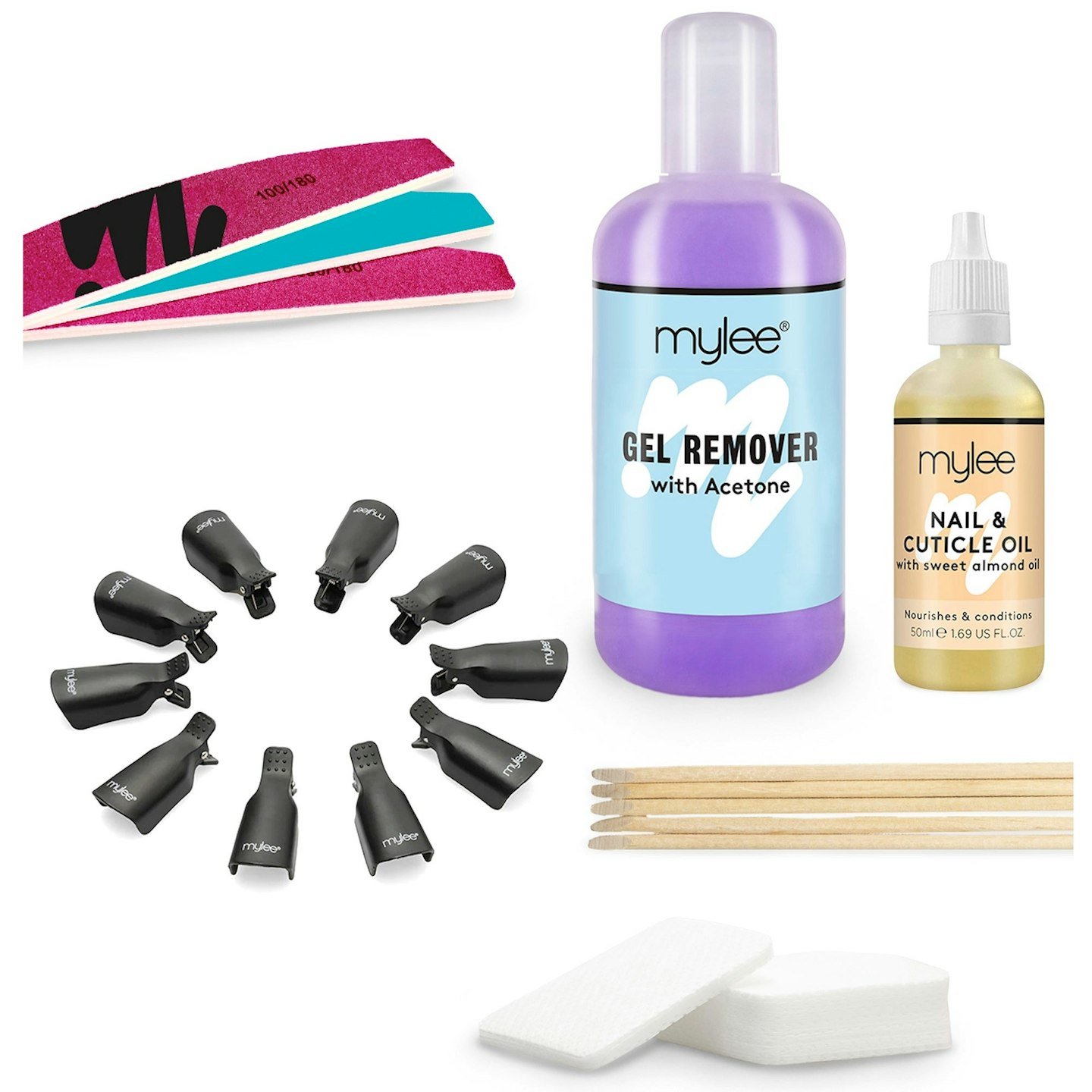
www.lookfantastic.com
Your one stop kit for gentle nail removal; a nail file, cotton pads, cuticle oil, pusher sticks, soak off clips - everything you need.

www.lookfantastic.com
For stubborn pieces of polish this tool will be your best friend, be sure to read the instructions before use.
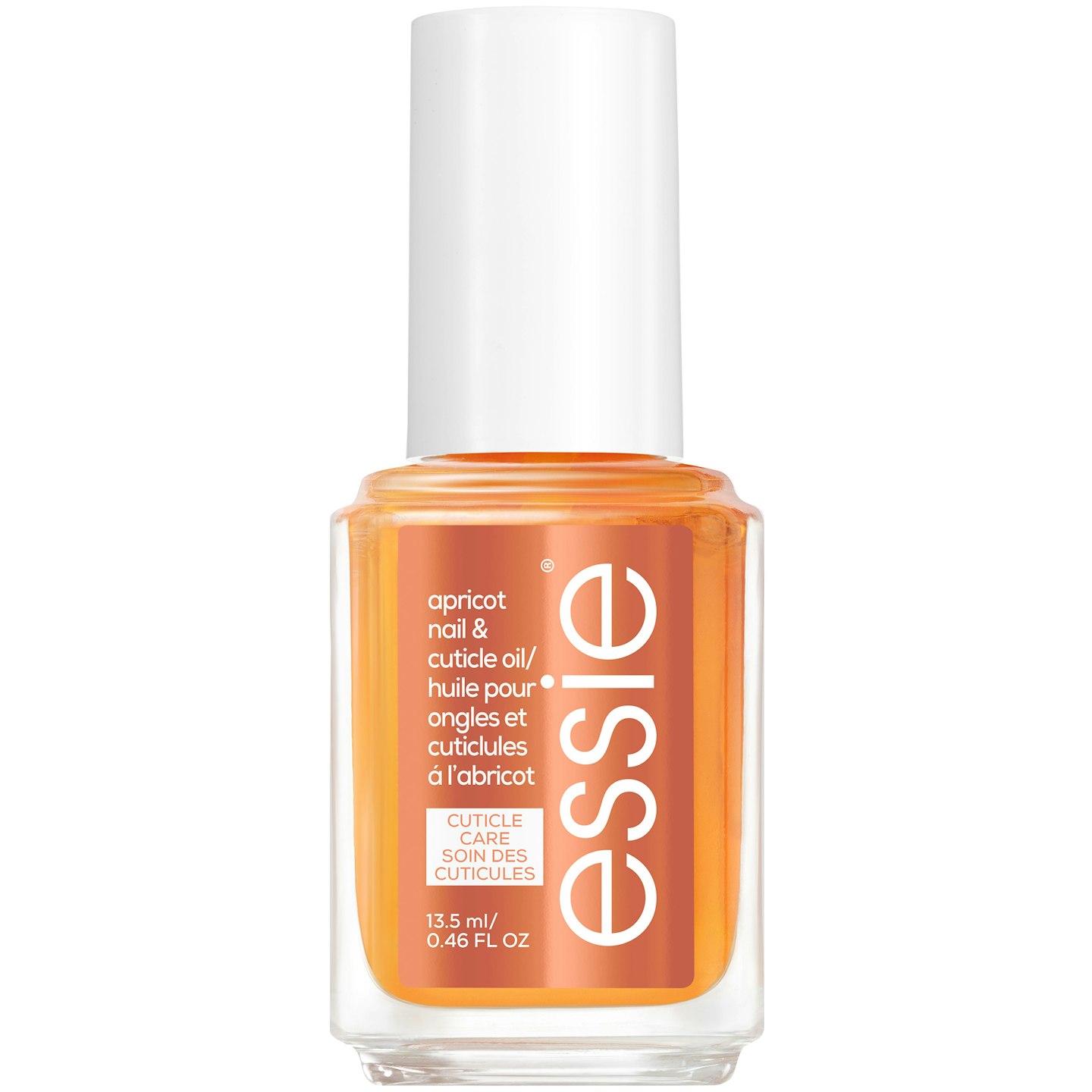
www.lookfantastic.com
An instant moisture boost for crusty cuticles.
Can you do BIAB nails at home?
Yes! The good news is you can apply BIAB nails at home, but only with patience and practice - it goes without saying that you'll get the best most longclasting results if you go to a professional.
Where can I buy BIAB products for at-home use?
While professional salons are the primary source for authentic The GelBottle Inc. BIAB products, builder gels are also available from various online and professional beauty supply retailers.
Best peach BIAB gel
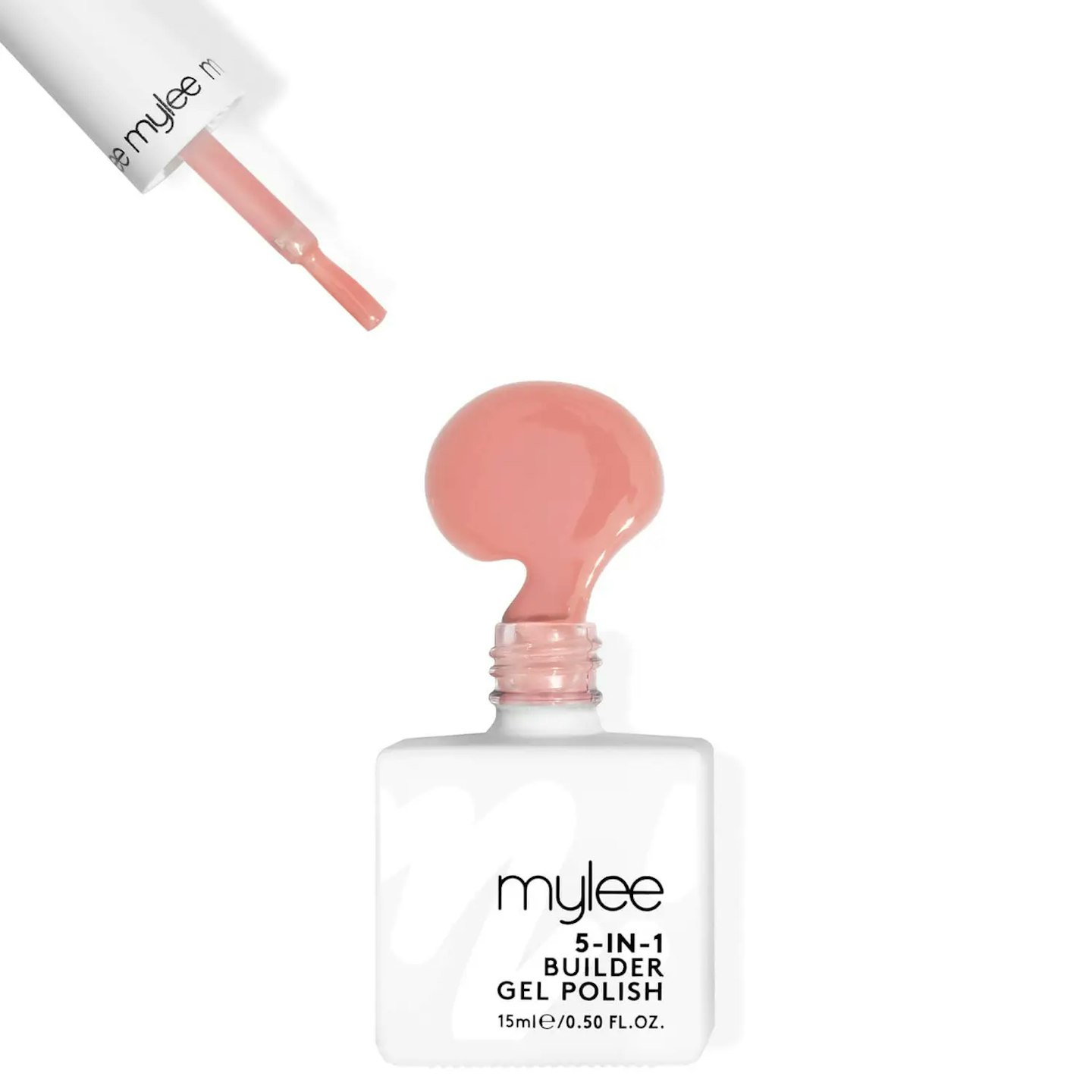
www.lookfantastic.com
Say hello to the perfect peach builder gel designed to help shape, prep and set the nails. You'll need an LED lamp and you're good to go.
Pros
- Strengthens nails.
- Long-lasting formula.
- Cures fast -30 secs.
Cons
- Requires soaking for removal.
BIAB FAQs
Is BIAB the same as gel builder?
No, BIAB is a specific brand of builder gel with added strengthening properties.
Is BIAB safe in pregnancy?
Always consult a medical professional, but generally nail products are low risk.
Why is BIAB so expensive?
It is a premium product that uses a specialised formula.
How do I stop my BIAB from lifting?
Ensure you prep your nails properly, including dehydration and primer.
Do you need to take a break from BIAB?
This is dependent on your individual nail health.
Rachael Martin is Grazia's Beauty Editor where she covers all things health, beauty and wellness
Renee Washington, Grazia's digital fashion and beauty writer, lives online. With a penchant for wispy lashes and streetwear, she writes about the worlds of fashion and beauty from the viewpoint of the modern fashion girlie..
Grazia beauty panellist Alexandra Teleki is the founder of and creative director at ‘The Hot Blend’, the alias which she is famously known for online. Originally from Hungary, she currently resides in the United Kingdom. Having studied nail technology, Alexandra chose to specialise in natural nail health, beauty and skin care with an objective of educating and inspiring.
Main image credit: Instagram @corrinnabianca
